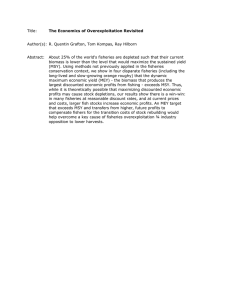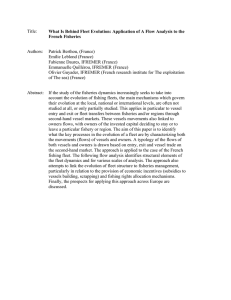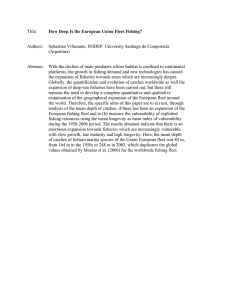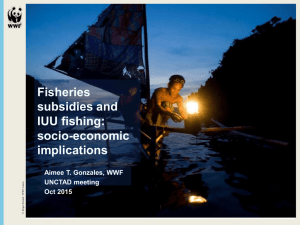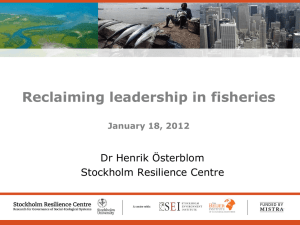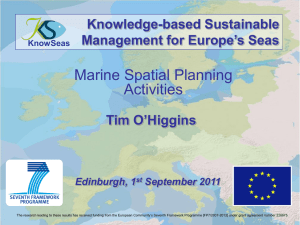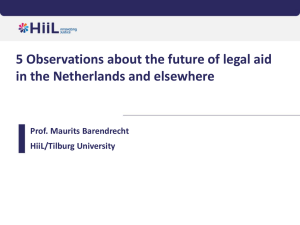The EU Common Fisheries Policy
advertisement
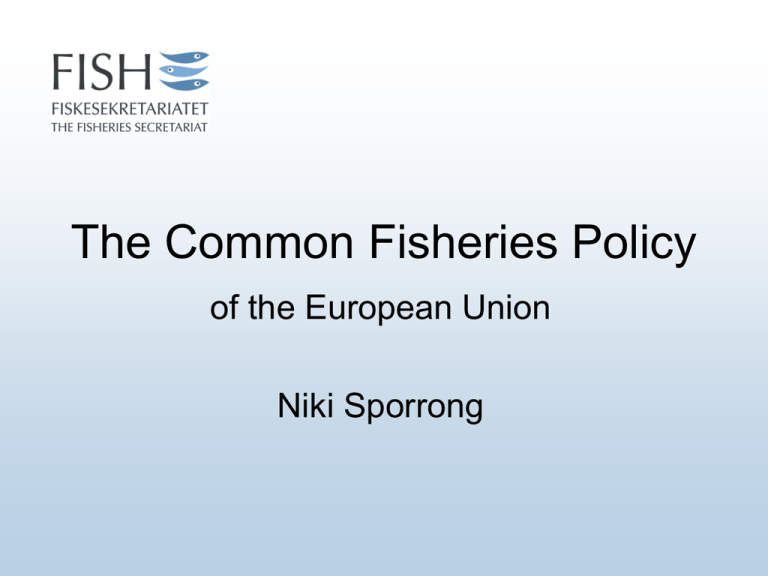
The Common Fisheries Policy of the European Union Niki Sporrong A history of conflict • • • • Between individual fishermen Between groups of fishermen Between different countries With other user interests and other stakeholders But cooperation can lead to good solutions The EU Common Fisheries Policy • • • • • • • Article 38, The Treaty of Rome 1957 Basic principles established in 1967 Market & structural policies 1970 Independent Directorate General 1976 External relations policy1977 Resource management policy in 1983 10-year reformcycle: 1992, 2002 & 2012 Today: four main pillars 1. 2. 3. 4. Resource management: TACs, technical measures, conservation Structural policy: fleet and infrastructure Market policy: trade, price support, labeling and consumer information External policy: fisheries partnership agreements (access) and international agreements Policy objectives partially contradictive The 2002 reform • 80 % of stocks in North East Atlantic outside safe biological limits in 2001 • Demersal stocks at < 10 % of 1970s levels • Increase in pelagic species • 25 % of catch consists of unwanted bycatch • Fleet estimated to be twice the sustainable size • Generous subsidies • Illegal fishing possibly at 40 % • Around 60.000 jobs lost in 1990-1997 Changes in 2002 reform • Conservation and resource management more central to the policy: recovery plans, long-term management plans, precautionary principle and ecosystembased management • National management of fleet size • Initially fewer changes in control and monitoring • Significant changes in the subsidies regime • Increased stakeholder participation in the policy process – RACs Implementation phase • • • • • • • Long-term managment plans Increased protection of the wider marine environment Days at sea restrictions Gear changes, landing sizes New IUU Regulation and Control Regulation Support for diversification RACs Slow process, lowest common denominator, Business as usual Leading up to 2012 reform the EU Common Fisheries Policy is still considered to be a failure: • Fleet still too large – possibly increased • Most European fish stocks still overfished (30 % o sbl; 80 % below MSY) • 93 % of North Sea cod taken immature • Landings fell by 30 % in 10 years Even the European Commission describes it as such: • Poor economic performance • High environmental impact • High fuel consumption • Low contribution to EU food supply • Consumers thinks CFP not sustainable • MS costs for management & subsidies > than value of catches Why is it not working? • • • • • • Short term profitability dominates Allocation of access rules Lack of sector buy in – cheating the rules Lack of complete mortality data National interests influence EU policy Still conflicting objectives Possible solutions • • • • • • • Prioritisation of environmental objectives, following scientific advice Long-term management objectives Minimise bycatch and effects on the wider marine environment (LIF) Access regime that promotes LIF Decision-making framework differentiating between strategic and management decisions Transparent and participatory decision-making Removal of harmful subsidies (structural) Wider changes affecting the CFP • • • • • • • Internationally agreed targets, such as MSY by 2015, leading to gradual change of EU targets for resources International and EU environmental legislation (BDC, Habitats Directive, MSFD, MSP) The Lisbon Treaty and the EP role (2010) Fuel prices and financial crisis Increased involvement from civil society Greater scrutiny by media Public campaigns and social networking sites Where are we today? Future policy now in the hands of Council and EP with Commission “guidance” - trialogue
